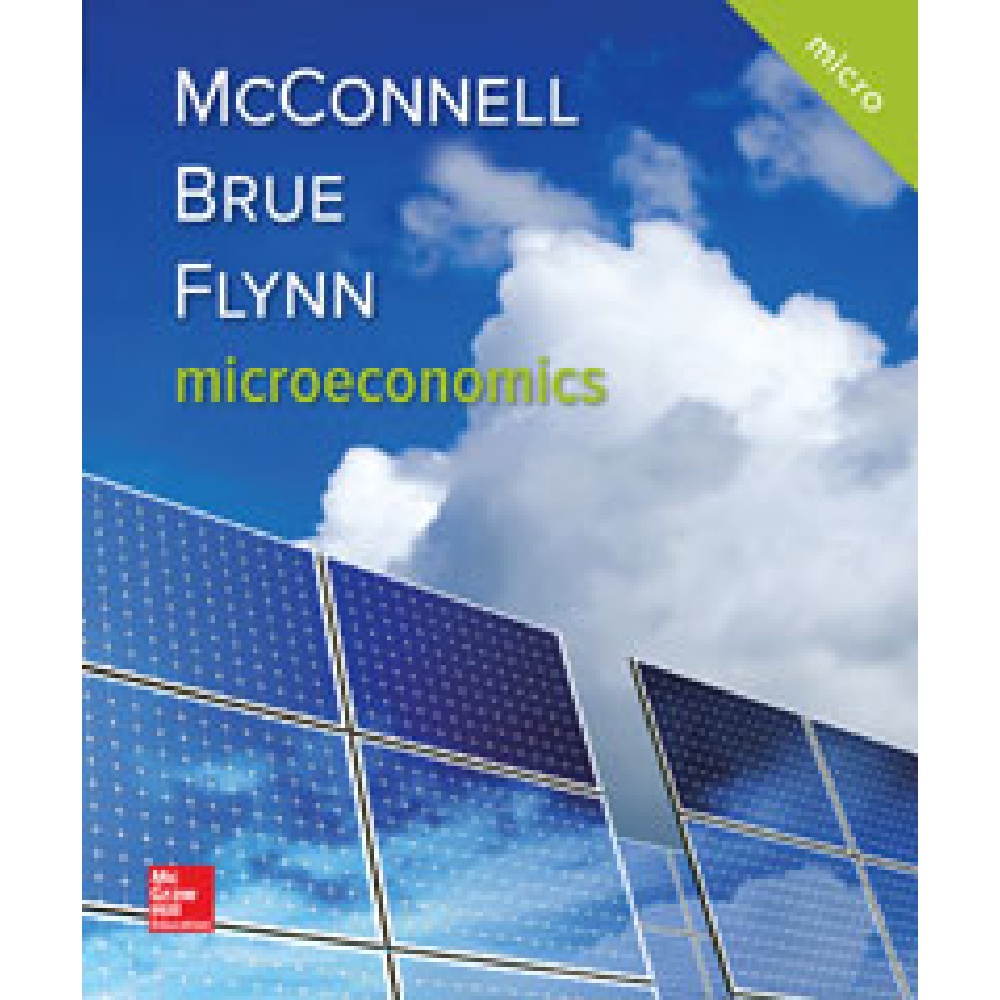Microeconomics 21st Edition By Campbell McConnell – Test Bank
$55.00
Microeconomics 21st Edition By Campbell McConnell – Test Bank
You will receive this product within 24 hours after placing the order
Microeconomics 21st Edition By Campbell McConnell – Test Bank
Chapter 11 Pure Competition in the Long Run Answer Key
True / False Questions
87. After all long-run adjustments have been completed, a firm in a competitive industry will produce that level of output where average total cost is at a minimum.
TRUE
AACSB: Knowledge Application
Accessibility: Keyboard Navigation
Blooms: Understand
Difficulty: 02 Medium
Learning Objective: 11-02 Describe how profits and losses drive the long-run adjustment process of pure competition.
Test Bank: I
Topic: The Long-Run Adjustment Process in Pure Competition
88. The long-run supply curve for a decreasing-cost industry is downsloping.
TRUE
AACSB: Knowledge Application
Accessibility: Keyboard Navigation
Blooms: Understand
Difficulty: 02 Medium
Learning Objective: 11-03 Explain the differences between constant-cost, increasing-cost, and decreasing-cost industries.
Test Bank: I
Topic: Long-Run Supply Curves
89. Long-run supply curves for a purely competitive industry can never be downsloping.
FALSE
AACSB: Knowledge Application
Accessibility: Keyboard Navigation
Blooms: Understand
Difficulty: 02 Medium
Learning Objective: 11-03 Explain the differences between constant-cost, increasing-cost, and decreasing-cost industries.
Test Bank: I
Topic: Long-Run Supply Curves
90. Marginal cost is a measure of the alternative goods that society forgoes in using resources to produce an additional unit of some specific product.
TRUE
AACSB: Knowledge Application
Accessibility: Keyboard Navigation
Blooms: Understand
Difficulty: 02 Medium
Learning Objective: 11-04 Show how long-run equilibrium in pure competition produces an efficient allocation of resources.
Test Bank: I
Topic: Pure Competition and Efficiency
91. Because the equilibrium position of a purely competitive seller entails an equality of price and marginal costs, competition produces an efficient allocation of economic resources.
TRUE
AACSB: Knowledge Application
Accessibility: Keyboard Navigation
Blooms: Understand
Difficulty: 02 Medium
Learning Objective: 11-04 Show how long-run equilibrium in pure competition produces an efficient allocation of resources.
Test Bank: I
Topic: Pure Competition and Efficiency
92. Allocative efficiency is achieved by equalizing consumer surplus and producer surplus.
FALSE
If this diagram represents a typical firm in the industry and the firm is producing at the profit-maximizing level of output in the short run, then in the long run we would expect more firms to enter the market.
TRUE
If this diagram represents a typical firm in the industry and the firm is producing at the profit-maximizing level of output in the short run, then in the long run we would expect economic profits in this market to rise.
FALSE
If the firm shown in this graph is producing at the profit-maximizing level of output in the short run, then it is achieving productive and allocative efficiency.
FALSE
96. When entrepreneurs in competitive industries successfully innovate to lower production costs, it usually results in long-run economic profits for the firm.
FALSE











Reviews
There are no reviews yet.